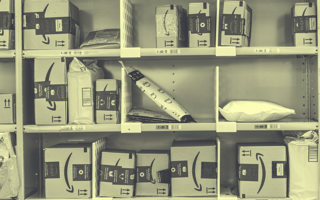Online sales grew by leaps and bounds in 2020, rising nearly 33 percent over the previous year. But much of that growth belongs to one online seller: Amazon.
According to the numbers, 40 percent of all online sales are now made on the site. While many are uncomfortable with Amazon’s domination, the site deserves much credit. It dominates online sales because it can deliver goods at prices as low or lower than local retailers, and it can deliver overnight — or, in some cities, even the same day. Marketplace merchants can take advantage of those resources and reach more customers. Without Amazon, many retailers and brands would have had a much harder time engaging with the large number of customers on the site, especially during this past year, when reaching customers altogether was a major challenge.
According to FeedbackExpress, there are more than five million merchants selling on Amazon marketplaces around the world, with many thousands in almost every category. Clearly, competing — much less standing out — in an environment like that is very difficult. But given the dominance of Amazon, retailers and brands have no choice but to sell on the site.
What can retailers and brands do to get customers to click on their product? How can they compete with others — or with Amazon itself — on price? Are there strategies that can give retailers and brands a competitive advantage? Here are some ideas on how to stand out, drive customers to a product page and complete sales.
Understand Customer Journeys
For many consumers, the initial interest in purchasing a product begins on Amazon, and the final decision to buy ends there too. The question is: What are customers doing between the initial search and the final conversion to a sale? During that period, customers are researching their potential purchase by checking out opinions and ratings and ferreting through Amazon reviews (which many don’t trust anyway), social media sites, opinion forums and more.
At each of these stages, customers are gathering data on the product they are interested in, which will eventually coalesce into a decision that will be based on the criteria they consider most important, including price, quality, country of origin and user satisfaction ratings. Each of these decisions is based on the information they garner from each step along the customer journey. For retailers and brands, those stops constitute disruption points: opportunities to influence customers with their messages. By presenting those messages at the appropriate disruption points, retailers and brands can lead customers to their product pages, which increases the likelihood that they will make a sale.
Dig Into the Data
Following that strategy, retailers and brands need two pieces of information: What are the disruption points they can take advantage of, and what are customers searching for at each? Armed with that knowledge, retailers and brands can develop marketing messages that will appeal to customers.
That data includes sites or product pages that customers click on, how long they stay on a page, search terms they use to find information, mouse movements or clicks on a page, the way they structure phrases, what questions they ask and which social media sites or forums they visit for information. By gauging the customer journey, brands can get a very clear picture of what interests customers — whether it’s price, quality, age-appropriateness, or something else entirely — and tailor their messages accordingly at the most advantageous disruption points.
These messages are designed to draw customers to a product page, but retailers and brands can also develop strategies to bring customers back if they leave the page without making a purchase. They can collect information about where a customer went after leaving the page, and they can figure out why they did so by discerning where they went and what information the potential buyer continued to search for. If the issue turns out to be price, for example, brands and retailers can insert a coupon at a disruption point in the hopes of bringing the customer back to their page.
Although some may criticize Amazon, the truth is that the site has been an important resource, especially during the COVID-19 crisis. Maintaining its delivery policies as best as it could helped hundreds of millions of consumers around the world, and, for many retailers and brands, Amazon Marketplace was the only way they could reach customers at all, given lockdowns and limitations in many localities. But while grateful for the opportunity, many brands and retailers find themselves stymied by the fierce competition.
Standing out in the crowd is hard enough at the local shopping mall, where there might be a handful of stores selling the same thing. But 100,000?
Amazon is a very welcoming platform; the barriers for selling on the site are very low. It’s no wonder that nearly 40 percent of Amazon merchants have earned no more than $25,000 ever from their businesses. But retailers and brands can succeed — as long as they’re armed with a plan on how to reach customers at disruption points and what messages to present to them.





